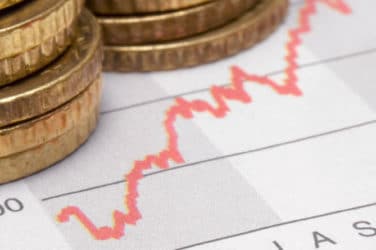
Tradeweb said investors are increasingly turning to exchange-traded funds from other fixed income instruments as volumes on the firms’s European ETF trading platform increased by nearly a fifth last year.
Adriano Pace, managing director for equity derivatives at Tradeweb, told Markets Media that trading activity on the firm’s European-listed ETF platform last year was €134.4bn, 19% more than in 2015. The European ETF venue had a record-breaking fourth quarter as the US election boosted total traded volume to €38bn, beating the previous high in the second quarter of last year by nearly €5bn. He said: “December also saw the arrival of our 27th liquidity provider on the platform, while there are now 15 dealers posting axes.”
Pace continued that Tradeweb has benefited from a trend that began four years ago as ETF trading has become more electronic.
“For the last three years we have been rounding out functionality, so that clients can trade in any way they choose,” he added. “For the next few years we want to allow clients to be smarter on how they trade and who they execute with.”
One development in the last few months is that pre-trade transparency has been embedded into tickets so clients can look back at how dealers have performed in any ETF category in a simple visualisation. Last year Tradeweb also began introducing algorithmic trading on the ETF platform.
Pace added: “If Tradeweb and an order management system are integrated, then clients can set rules so deals below a certain threshold are traded automatically. Not every institution will necessarily go down that road and the larger trades will still be executed manually.”
He continued that one of the biggest objectives this year is to increase the number of clients using the platform. “For instance, investors who have historically used other instruments are increasingly turning their focus to fixed income ETFs,” said Pace.
For example, fixed income investors can use ETFs rather than total return swaps or futures for certain trades. Pace added that pension funds are engaging more with ETFs and although the Tradeweb platform has traditionally been used by institutions, retail sector robo-advisors are building portfolios using ETFs. “There is now a genuine engagement from the larger players in the U.K. and Europe and they need a trading solution,” he continued.
Jose Garcia-Zarate, associate director of passive strategies research for fund researcher at Morningstar Europe, said in a report that all ETF providers have identified fixed income as one of their key growth areas. He added that fixed income was a success story for the European ETF industry last year, attracting €20.6bn in net new money and increasing market share year-on-year to 24.1% from 22.6% despite worries about interest rate rises.
Overall, the European ETF market attracted €47.9bn in net new money in 2016 with equities having annual net inflows of €13.6bn. Total European ETF assets under management increased to €546bn last year from €466bn in 2015 according to Morningstar.
“ETFs have made great strides in being accepted as investment vehicles for fixed income exposures. There remain concerns and an ongoing need for education, most notably around the issue of ETF trading and liquidity,” said Garcia-Zarate.
MiFID II, new regulations in the European Union from January 2018, will require mandatory reporting of ETF trading in the region for the first time, which will increase transparency, and could encourage more trading.
“Approximately 70% of the European ETF market is traded over-the-counter and that ratio has not really changed in recent years,” said Pace. “Exchanges would probably need to provide more liquidity for large blocks and deeper order books in order to change this ratio in a meaningful way.”
To support the MiFID II post-trade transparency requirements Tradeweb said it will apply for regulatory approval this month to launch an Approved Publication Arrangement service.
MiFID II requires real-time public reporting of detailed information for a majority of trades across a range of asset classes including fixed income, commodities and OTC derivatives. Transactions executed on a trading platform can be reported by that venue, while off-venue or OTC deals need to be reported by a counterparty using an APA.
Liz Carter, Tradeweb’s director for trade processing and clearing, told Markets Media: “We have been speaking to the industry for 15 months and have initially focused on reporting non-equities and equity-like instruments, such as ETFs. However, more recently we have had demand largely from buyside firms to include cash equities.”
Deutsche Bank, Goldman Sachs and J.P. Morgan have committed to the Tradeweb APA services for non-equities according to a statement. “The fact that large banks have joined our APA is a vote of confidence as keeping trade data confidential was a big concern,” added Carter.
Mario Muth, head of European fixed income market structure and head of eRates sales at Deutsche Bank, said in a statement: “This is a good fit for us, particularly in the OTC derivatives space, and will help meet the changing needs of the market.”
Tradeweb operates as both a multilateral trading facility and swap execution facility, and so already meets current regulations for electronic trading and reporting. The APA will receive trade data electronically via FIX, a messaging standard, and via a user interface.
Simon Maisey, managing director and global head of business development at Tradeweb, told Markets Media: “We will provide multiple ways to connect to our APA including lighter options that will be more suitable for smaller buyside firms.”
The APA service will include data collection, monitoring, validation, exception processing and management information statistics, as well as determination of both standard and enhanced deferred publication arrangements. All relevant information will be made public electronically and on a website, meeting both ‘machine readable’ and ‘human readable’ regulatory requirements.
Maisey said: “We are used to operating in a regulated environment, have technical competence and we will be ready this quarter. Firms can connect and get one piece of MiFID II done and out of the way.”





